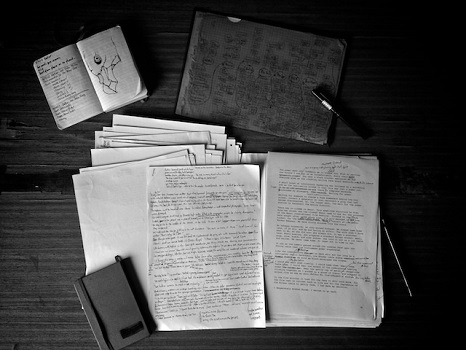Serving the Memory
Why do we chose to write memoir instead of fiction?
Fiction: When you think you know it.
Memoir: When you want to figure it out.
Memoir: when did the real story being with me? The incident, the wedge moment, when things came together and began.
Example: If something inspires you to write about your childhood, then write about your childhood, but star with the incident which inspired you to write about your childhood–the incident can tell us and set the tone about why we’re reading about your childhood. (Think of the narrator for the TV show “How I Met Your Mother.”)
Memoir is about roots/routes: where we come from and where we go. This is why we write memoir, to explore. Memoir isn’t just remembering something, it’s also about coming-t0-terms with something.
Readers of memoir are like the audience at a magic show, they’re not merely there for the wonder of it all, they’re also looking for the “holes,” and how it’s done. The audience at the magic show: “Look it’s in his hands.” The audience reading a memoir: “Look, he couldn’t have remembered all that.”
*Credibility* The trust just isn’t the facts, it’s the spirit of the work.
Don’t be afraid of not saying something in dialogue. Sometimes what isn’t said says a lot. Capture the spirit of the conversation more than just the actual verbatim words.
Combining and using description: Michael Ondaataje, Running the Family, he describes his sick aunt and how invalid she is and combines it with the description of the overgrown grass, vine growing up the house, etc. (The house is dying and growing old/over grown, his aunt is dying and her mind is old and withered; but the house and the aunt have their own stories of how they came to be and lived). This is a great way to combine story/memory/and description. If you can’t remember all the details of a sign, then look if you can correlate it to anything else that would fit within the story and yet still carry it forward.
Think of Memoir as Dirt: The loam–soil–from which we come and grow. It can help us grow or smother us. It can lack nutrients or the nutrients can be plentiful. Soils change–drought, fire, etc–sometimes for better or worse.
Opinions must be in memoir writing: Opinions–know why you’re writing. Own your opinions. A memoirist must know if their characters are good or bad, so they must have their opinions.
*These notes were from one of my favorite professor and mentors at Lesley University: Rachel Manley.*
Click here to see more MFA Notes…
Recommended book for this section: Running in the Family, by Michael Ondaatje.
Picture: Flickr/Prathima
About these MFA Notes: Serving the memory in memoir
—
Recently, I graduated from Lesley University with an MFA in creative writing, and I decided that I wanted to share what I learned in a series of blog posts.
I decided to share for two reasons:
1) My notes, although not too detailed, could possibly help other writers.
2) Rewriting my notes forces me to re-read and re-think everything I learned, so it’s a win-win.
But before we dive in, please keep two things in mind:
1) These notes are neither complete nor perfect. The classes at Lesley were not typical lecture/note classes; the classes were filled with writing and thinking exercises and often this left no time for notes (in a good way). However, even with that, these sparse notes, I do believe, could still offer value.
2) I may, from time to time, include actual writing prompts from the classes, please bare with me, they’re first drafts and were done in the moment.
I hope you enjoy this series of notes and if you have any questions about the notes, Lesley University, or MFA’s, please feel free to contact me.
—

